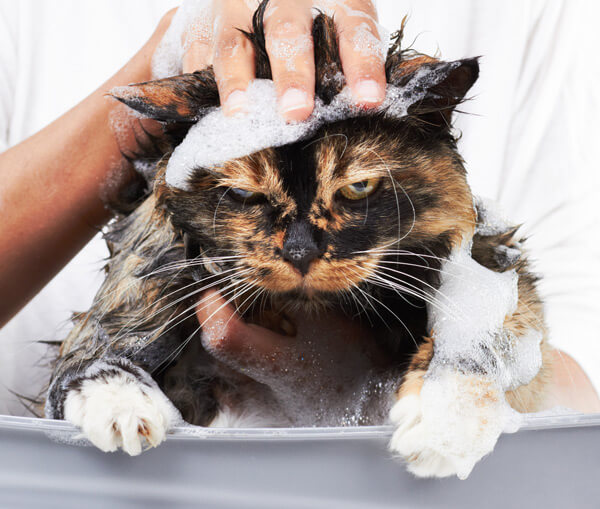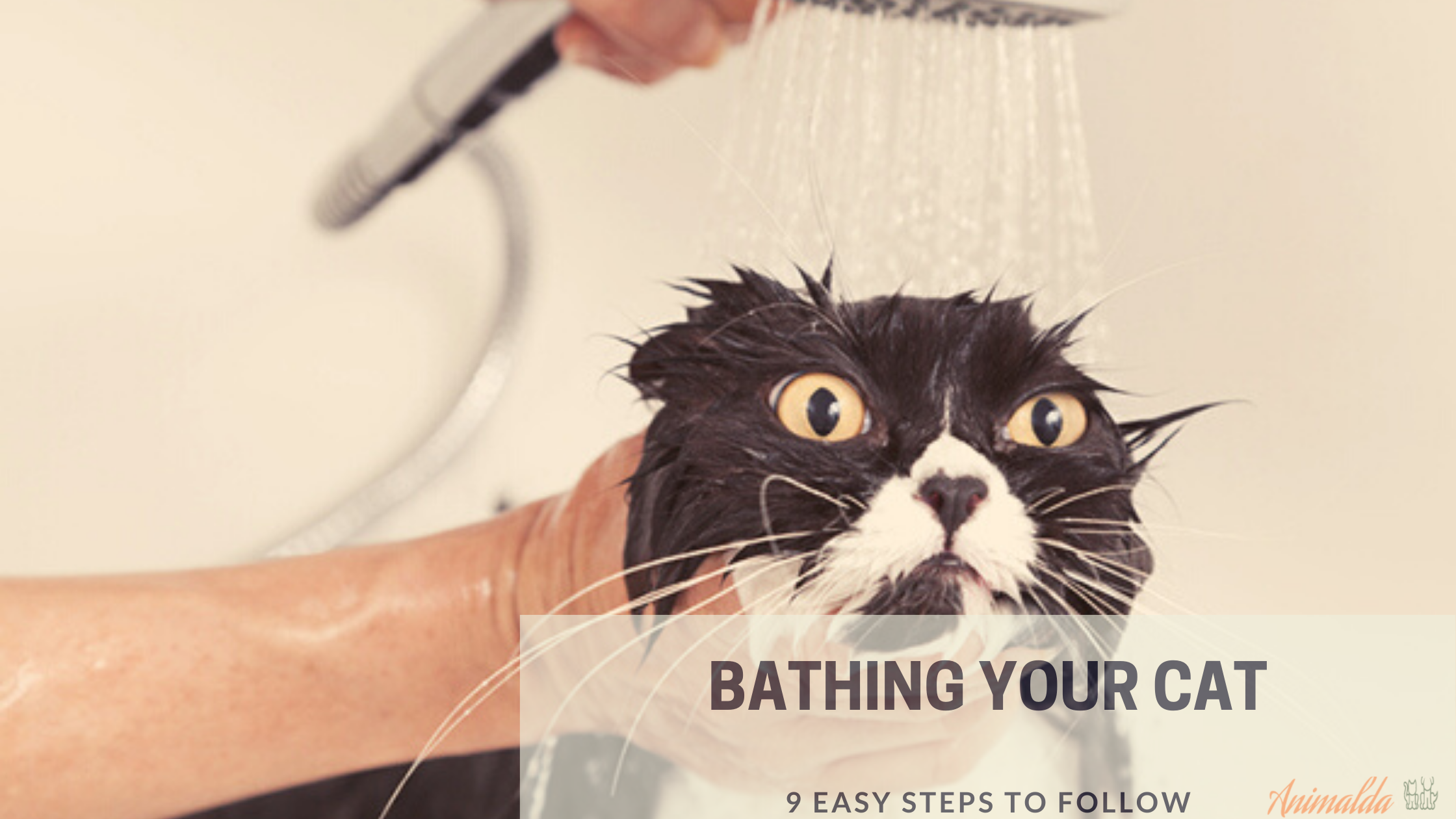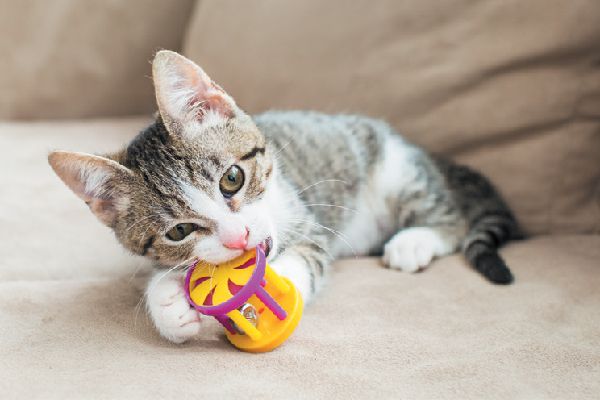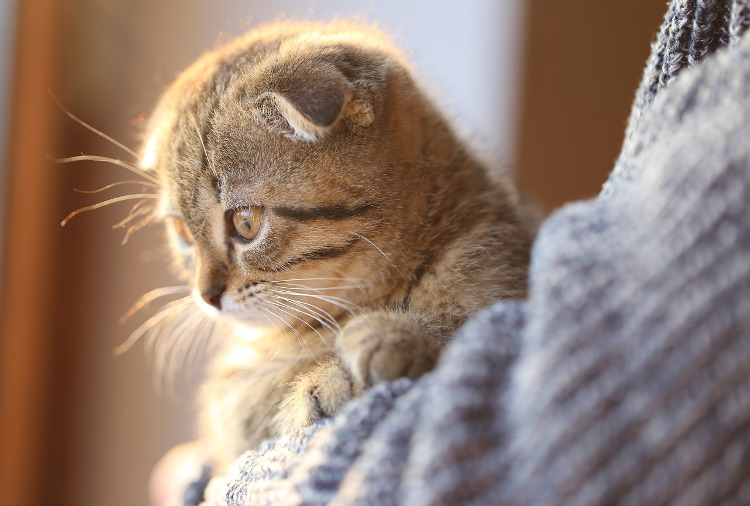Do cats even need baths?
You might ask this question or wonder since we all know that cats are pretty clean animals in general. They spend more than half of their time licking themselves clean.
Usually, brushing a cat’s fur would be perfect and enough to make your pet look clean and fresh.
You can’t believe cats can clean 100% of the germs in their body, can you?
Cats do know how to put themselves in funny situations. And any can lead to a dirty end where it needs a bath.
You can send your pet to professional groomers for this. It is a good idea for those who have zero prior experience with this because it can get real messy.
But then again, it is a better idea to save the cash and try it out at home. This will help improve your pet care practice too!
Even so, take enough preparations and stay informed to avoid a horror bath.
4 Times When We Can’t Avoid bathing A Cat

1. If your cat suffers from obesity and is unable to clean some parts of himself. In this case, you might want to bathe your cat once in a while to ensure there aren’t any fleas.
2. If your mischievous cat gets itself into oil, grease, or difficult dirt that doesn’t get off easy.
3. What if your cat soils herself in the litter box? Or what if she tried to climb the chimney from the inside? In these situations, you’d want to bathe your pet!
4. Bathing cats help to reduce dander in their fur. Giving a shower to your feline friends will benefit anyone in the house who’s allergic to cat hair or has a “cat allergy”.
E. Cats with longer body hairs should get regular baths because they need more help to stay hygienic. Consistent also wouldn’t mean more than once a month, because that can dry out their skin.
How to Give Your Cat a Bath – Nine Easy Bathing Process To Follow

Step 1: Brush your cat’s fur before you start the bathing process. Brushing will prevent tangles from forming in the fur while bathing. Fixing tangles while the fur is still wet can hurt your pet and make the task feel like a hassle to you too.
Step 2: Try using cotton pads or fluffs to protect your cat’s ears. Place the cotton on your cat’s ears. Otherwise, water might seep inside the ears and result in infections or discomfort.
Step 3: Add four to five inches of lukewarm water to the bowl, enough to submerge the cat’s body underwater in half.
Step 4: Hold your pet by the scruff and place her on a rubber mat, on the bathtub/sink/big bowl, whichever you’re using.
Keep a firm grip on your cat at all times with one hand to prevent escaping. Or you can do this by asking a friend to help you out. This will give you more free hands to finish the work.
Step 5: Then, gradually add some cat shampoo and lather the body with it. Then gently rinse the body and fur. Occasionally put some shampoo water near the head and neck to run down to the rest of the body.
Clean the whole body, including the tail area and beneath the belly. If you’re taking all the trouble of bathing your kitty, it might make your pet as clean as possible.
Be very careful near the head and face with the water and ensure that no water enters your pet’s ears. Use a wet towel when it comes to washing your cat’s face and neck instead.
Step 6: Use a water spray nozzle or a water hose to pour fresh water on the cat’s body to rid the skin of soap. Replace the water in the tub to make sure no soap remains. Try your best not to surprise your pet with the water spray and keep the water flow soft and slow.
Step 7: Make sure you have rinsed out all the soap and shampoo from your cat’s fur.
Otherwise, it may irritate the pet’s skin and itch later. It might also attract more dirt to the fur and body after bathing, which makes this all pointless.
Step 8: Wrap your baby in a warm and dry towel as soon as it’s out of the water. Wrapping will help keep the cat from catching a cold or feeling uncomfortable because cats hate staying wet. Keep your pet in a warm towel in a warm room with no access to wind or cold air.
If your cat has long fur or if you’re bathing a kitten, you should opt for a hairdryer after a cat bath to help dry. But do this only if you think your cat wouldn’t get startled and freak out!
Put the dryer at the lowest power and at a safe distance from the cat.
Check if your cat is okay or comfortable with the setting.
Otherwise, you can use two towels instead of one for your long-furred cat.
Step 9: Now that the cat is dry and clean, brush that fluffy fur (if your cat has big fur) to make her look all tidy and pretty!
How To Bath A Cat With Claws?
Cats with claws that bite and scratch and fight when you’re trying to bath it can give you a super stressful time.
Thus you must take precautions and plan your pet bath ahead of time.
It is a must always to use lukewarm water. Cats are sensitive animals and very moody too.
They’re unpredictable because you don’t know how one can react.
So, using too cold or too hot water will be a bad idea. Lukewarm water helps cats to be most comfortable while bathing.
Keep a warm and fluffy towel near the bathing area because you’ll need to wrap your baby in the towel immediately, once you take her out of the water!
Most cats we know hate water and the whole bathing process—especially the first-timers panic a lot.
Cat skin and thick fur give them a hard time to get dry, which is also another reason cats hate to get wet. This is why a fluffy towel is necessary nearby.
Try to use a rubber bath mattress to keep your pet from sliding and falling while bathing. This will also lower the chances of your cat getting angry and scratching at you.
This brings us to our next precaution; wear rubber gloves, in case your cat tries to scratch you anyway.
Try to grab a nail clipper and groom your cat before even taking her to the bathroom. Clipping her nails before she bathes will save you from the pain of cuts in your arms!
If your cat gets jumpy and starts running around to avoid bathing, consider trying another time when she feels calmer. Or you can play with her long enough to get her tired and convinced fast!
You could also try when she’s sleepy, have a good big meal, and feel lazy. Manipulating the pet’s mood can make your work much more comfortable, especially when you have a fussy cat with scary claws.
How To Give The Cat A Bath That Hates Water?

If your cat hates water, then you’re in for a fight. Prepare yourself for some time of pampering and manipulating your pet to make this a less stressful task.
Wear old or dirty clothes because they’ll get wet anyway!
You can start by trying to calm him or her down in whichever way you feel is best for your specific pet. You might try using her favorite toys in the bathtub/sink, stroking and rubbing her softly to calm her down. Use distracting toys like rubber ducks and floating balls.
Try to make the whole bathing process slow if you think your pet is hating it.
Trying to speed things up could make her even more upset and stress her out.
You don’t want to run around your house with a wet cat with cat shampoo all over the place!
Some people also discovered that speaking in a friendly and gentle manner to your cat can calm him or her down.
This also makes them feel more comfortable and trusting. If your cat hates water, you might also want to avoid wetting the head area during bathing.
Because chances are, she will get aggressive and stop trying to cooperate.
Give your kitty a nice reward or a treat for enduring so much and making it bearable for you too after you’re done.
Your cat might seem more interested in bathing next time if nothing goes wrong.
Try and follow all the tips to make this an enjoyable experience.



